ANTHROPOCENE
Jonas Hart, Dameon Lester & Melissa Loop
- Opening Reception: Friday, November 4, 7-10pm
- Exhibition Dates: November 4 – December 4, 2016
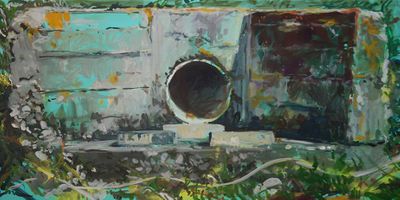
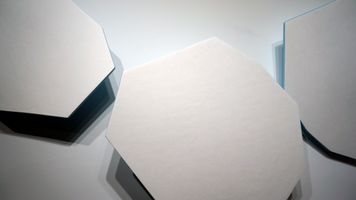
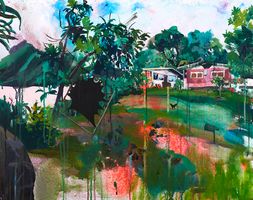
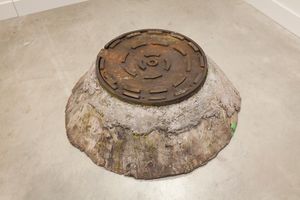
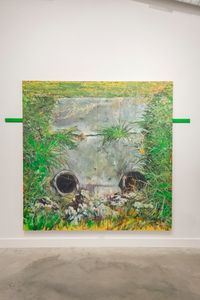
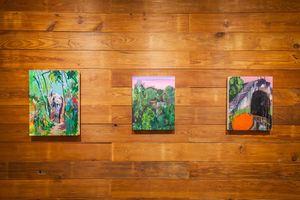










Anthropocene examines the acceptance of what is outwardly visible versus what’s beneath the surface. Jonas Hart, Dameon Lester and Melissa Loop illustrate the significance of the larger picture, the systems or the emerging meaning. How aware are we of our influence on the landscape? Whether it’s an underground water system that is never seen, a far away place that seems pristine or the tip of an iceberg’s assumed permanence, the human animal has put our stamp on the world.
Jonas Hart
Austin’s many creeks and waterways are well known for their scenic beauty and recreational value - they are also the groundwork for massive water management systems enhanced through years of human expansion and fortification. This work is part of an ongoing exploration the infrastructural tokens - drains, culverts, manholes, etc. - that are often the only visible manifestations of the underlying water infrastructure that form our integral relationship to landscape. Working recently from features found along a drainage running through North Park Trail in Anderson Mill, each of the paintings and sculptures represents an original referent object on a one to one scale.
The sculptures remove found infrastructure elements from niches in the larger landscape. Isolated from their original surroundings, their crudeness and sometimes arbitrary construction becomes more apparent and the wearing of time and the elements are highlighted as painted features. Scattered throughout the gallery, they act as a crude restaging of their reference landscape.
The paintings each begin with a prime layer based traditional infrastructural marking colors. Caution yellow, utility orange, sewer drain blue/green - each prime color is left visible at the edges of the paintings and peek through the layers that build each image. While each painting depicts an isolated structure, the edges bleed into their surrounding landscapes. The marks that form each image aggregate loosely, building up and deteriorating simultaneously - a reminder of the instability of the structures over time.
Examining closely the features of our infrastructure, the extent of our integration with our landscape is made concrete - massive and fragile.
Dameon Lester
Our perceptions of existence are bound by our humanity. These limitations prevent us from comprehending the greater resonance of our actions. My sculptures suggest an uneasy continuum between the known and unknown, as well as the controlled and controlling elements of the world that surrounds us. These minimal forms abstract the glacial ice sheets, fragments, and crevices encapsulating the increasingly ephemeral quality of nature's assumed permanence.
Melissa Loop
I was in Tikal sitting on top of the highest temple after sunset with about a dozen other tourists. We were listening to our Mayan guide tell us a story about him and his twin brother born in the rainforest. The Mayans believe that twins are of the gods, a sign of good luck. So the Shamans bound their heads like they used to in the old times. In the distance, the tops of the other temples peaked above the rainforest and we watched a lightening storm dance in the sky. Part of the scene was a set up created for us tourists. However, part of it was a rare moment in time that contained all of the mystic and spiritual clarity that we search for when traveling to faraway places. This is the balance I search for in my paintings. They are self-critical and never fully submit to the fantasy. It's about the search for the spiritual and the nostalgia and the mismemory of place. I am an outsider, a tourist, a spectator. No matter how difficult I try to make my journey, I do not understand. However, I can't help but want the fantasy to be true and to get closer to the other.
My current body of work is based on trips that I have taken to Central America, where I visited Mayan sites and photographed the landscape. I enjoy the mystery and misrepresentation of the past and the way it collides with the harsh current situation for the Mayans that still live in the region. It is not important if this duality comes across in the work, because for me, it is a place to start. I am on a journey with no destination and each painting is a window into a haphazard narrative picked randomly from thousands of photos on a whim.
